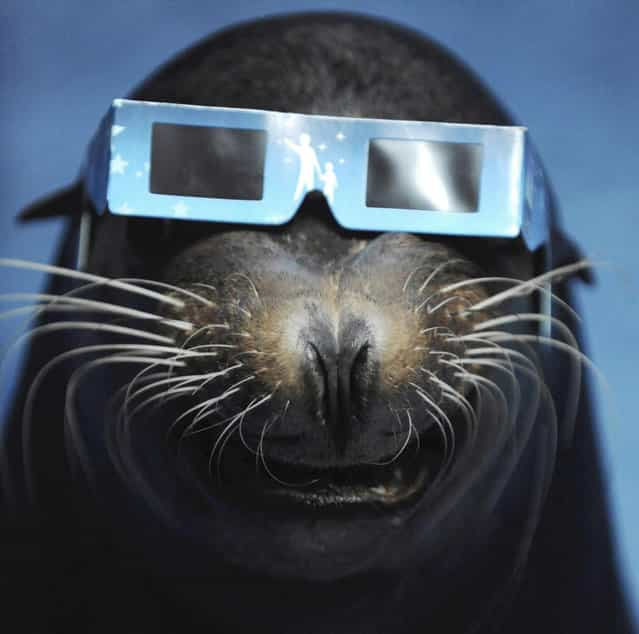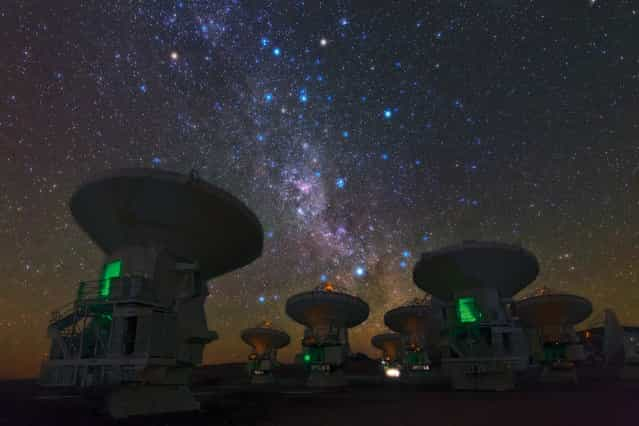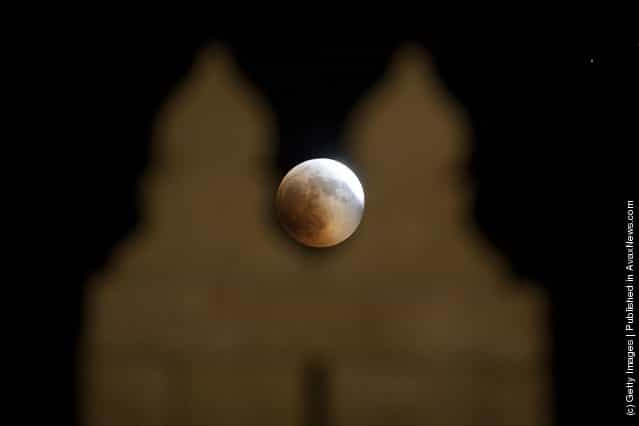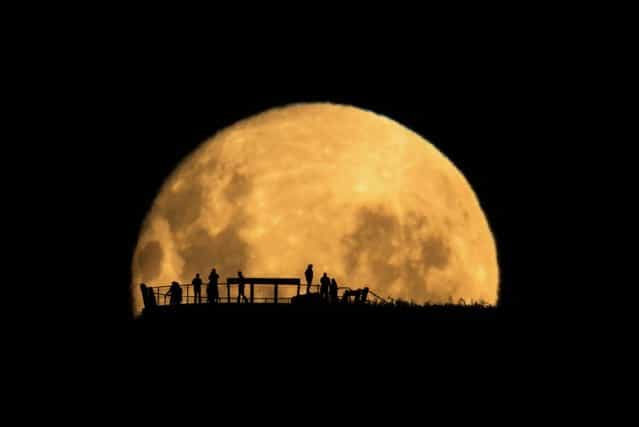Solar Eclipse
Advertisements:
Equipment is made ready to be used for a direct feed of the total solar eclipse to NASA on the foreshore at Palm Cove in Tropical North Queensland on November 13, 2012. Tens of thousands of people were flocking to Australia's laid-back tropical north for a total solar eclipse on November 14, a phenomenon officials say has not been seen in the region in 1,300 years. (Photo by Greg Wood/AFP Photo)
The Diamond Ring effect is shown following totality of the solar eclipse at Palm Cove in Australia's Tropical North Queensland on November 14, 2012. Eclipse-hunters have flocked to Queensland's tropical northeast to watch the region's first total solar eclipse in 1,300 years on November 14, which occurred as the moon passed between the earth and the sun, casting a shadow path on the globe and lasting for a maximum on the Australian mainland of 2 minutes and 5 seconds. (Photo by Greg Wood/AFP Photo)
Rod (R) and Greta Handmar (L) use different techniques to observe Australia's first total solar eclipse in 26 years at Koolymilka north of the outback town of Woomera, 04 December 2002, in central Australia. Koolymilka is in a tiny 32 kilometre-wide umbral band running across the desolate state of South Australia which witnessed the eclipse shortly before sunset at 1940 local time. (Photo by Torsten Blackwood/AFP Photo)
In this photo provided by Tourism Queensland, a hot air balloon floats in the air as a solar eclipse is observed near Cairns, in Queensland state, Australia, Wednesday, November 14, 2012. Starting just after dawn, the eclipse cast its 150-kilometer (95-mile) shadow in Australia's Northern Territory, crossed the northeast tip of the country and was swooping east across the South Pacific, where no islands are in its direct path. (Photo by David Barker/Tourism Queensland/AP Photo)
A woman wears special glasses to view the solar eclipse from the beach at Palm Cove in Australia's Tropical North Queensland on November 14, 2012. Eclipse-hunters have flocked to Queensland's tropical northeast to watch the region's first total solar eclipse in 1,300 years on November 14, which occurred as the moon passed between the earth and the sun, casting a shadow path on the globe and lasting for a maximum on the Australian mainland of 2 minutes and 5 seconds. (Photo by Greg Wood/AFP Photo)
Clouds obscure the moon passing in front of the sun as it approaches a full solar eclipse in the northern Australian city of Cairns November 14, 2012. (Photo by Tim Wimborne/Reuters)
In this photo released by Hot Air Balloon Cairns, Hank Harper, right, of Los Angeles watches the solar eclipse from a hot air balloon near Cairns, Australia, Wednesday, November 14, 2012. Harper flew to Australia with his two children specially to watch the full eclipse, saying we [watched the sun's rays re-emerge from behind the moon while kangaroos hopped along the ground below]. (Photo by Hot Air Balloon Cairns/AP Photo)
A tourist watches as the moon passing in front of the sun as it approaches a full solar eclipse in the northern Australian city of Cairns November 14, 2012. (Photo by Tim Wimborne/Reuters)
In this photo provided by Tourism Queensland, the moment of a total solar eclipse is observed at Cape Tribulation in Queensland state, Australia, Wednesday, November 14, 2012. Starting just after dawn, the eclipse cast its 150-kilometer (95-mile) shadow in Australia's Northern Territory, crossed the northeast tip of the country and was swooping east across the South Pacific, where no islands are in its direct path. (Photo by Tourism Queensland/AP Photo)
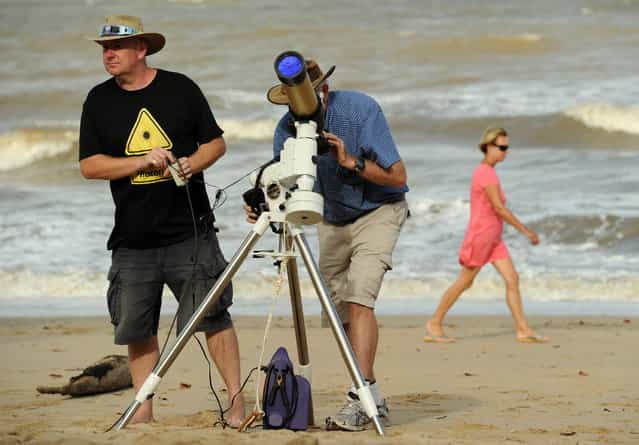

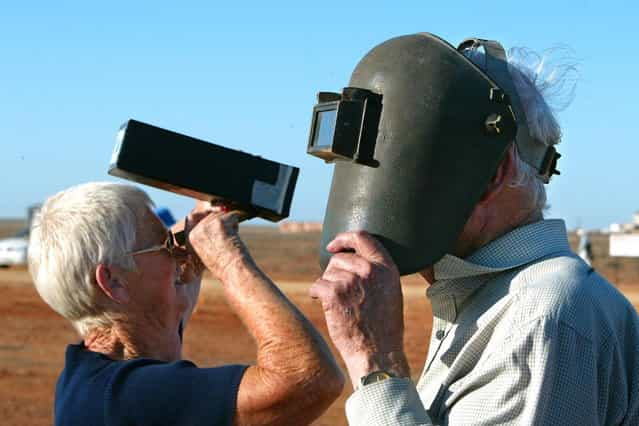
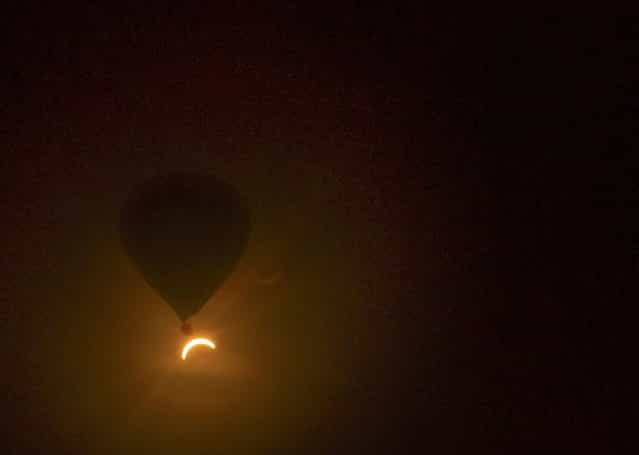
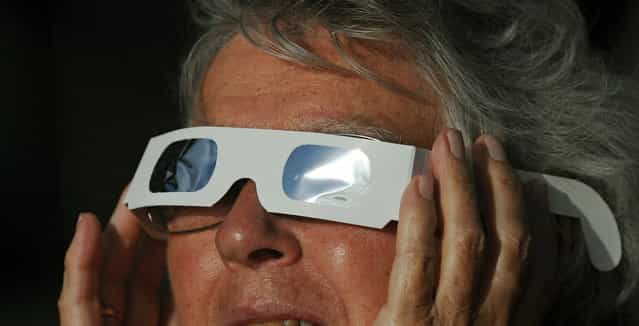
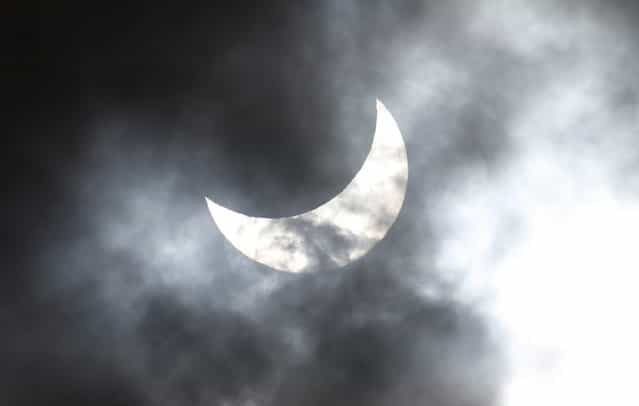
![In this photo released by Hot Air Balloon Cairns, Hank Harper, right, of Los Angeles watches the solar eclipse from a hot air balloon near Cairns, Australia, Wednesday, November 14, 2012. Harper flew to Australia with his two children specially to watch the full eclipse, saying we [watched the sun's rays re-emerge from behind the moon while kangaroos hopped along the ground below]. (Photo by Hot Air Balloon Cairns/AP Photo) In this photo released by Hot Air Balloon Cairns, Hank Harper, right, of Los Angeles watches the solar eclipse from a hot air balloon near Cairns, Australia, Wednesday, November 14, 2012. Harper flew to Australia with his two children specially to watch the full eclipse, saying we [watched the sun's rays re-emerge from behind the moon while kangaroos hopped along the ground below]. (Photo by Hot Air Balloon Cairns/AP Photo)](http://img.gagdaily.com/uploads/posts/fact/2013/thumbs/0000a4f8_medium.jpg)
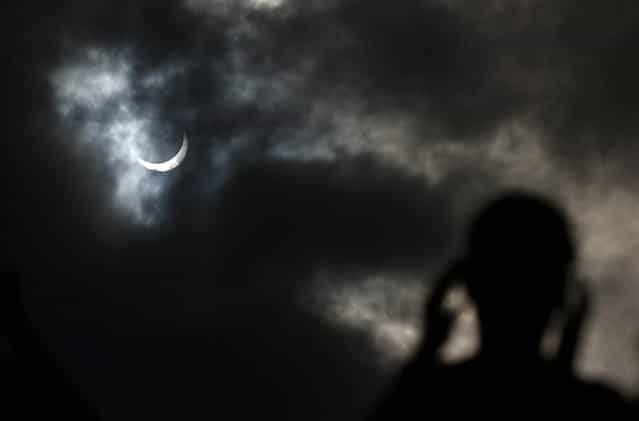
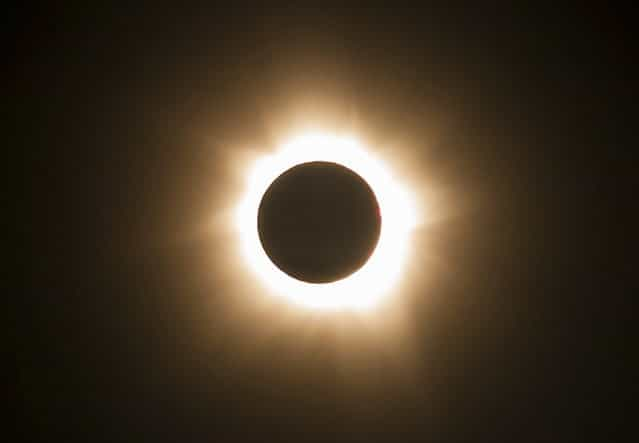
![Rare [Hybrid] Total Solar Eclipse Rare [Hybrid] Total Solar Eclipse](http://img.gagdaily.com/uploads/posts/fact/2013/short/00010c55_medium.jpg)
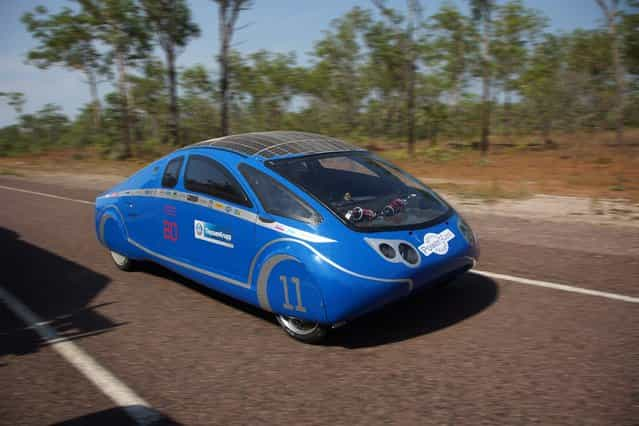
![World's Biggest Yacht [Eclipse]Berthed In New York City World's Biggest Yacht [Eclipse]Berthed In New York City](http://img.gagdaily.com/uploads/posts/fact/2013/short/0000bb7e_medium.jpg)
